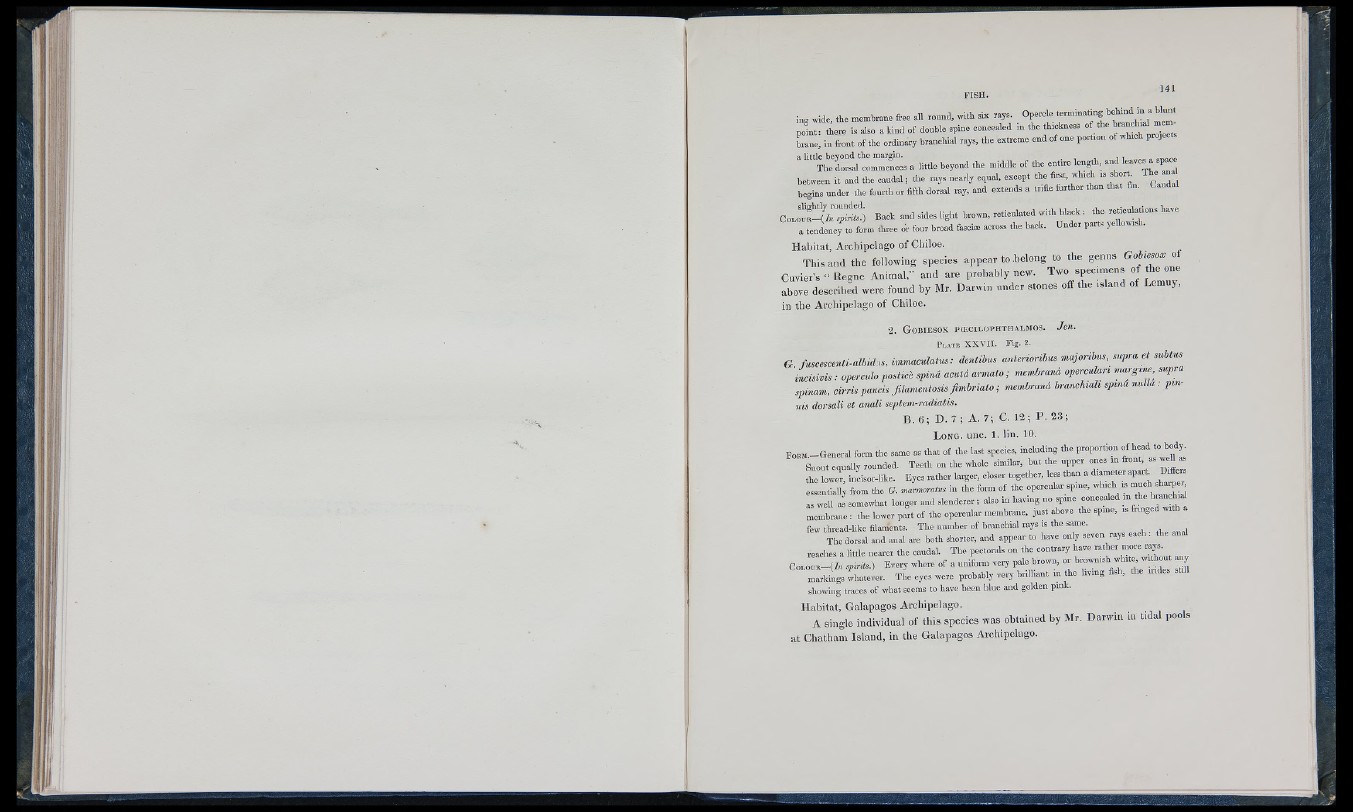
I
FISH. U I
in . wide, the membrane free all round, with six rajs. Opercle term inating behind in a blunt
p o ln : t/e re is also a hind of double spine concealed in tbe tbiehness o the -
L an e, in front of tbe ordinary branchial rays, tho extreme end of one portion of which proj
“ " S m a l t m “: : t s a l l . t , e beyond tb^
between it and tbe caudal ; the rays nearly equal, except the first, whteh ts shorb T he ana
begins under the fourth or fifth dorsal ray, aud extends a trlñe further than that fin. C audal
C o n o T !/:“; « ! ) Bach aud sides light brown, reticulated w ith biach : the reticulations have
a tendency to form three or four broad fasciæ across the back. U nder parts yellowi .
Habitat, Archipelago of Chiloe.
This and the following species appear to belong to the genus G obte^x oí
Cuvier’s “ Regne Animal,” and are probably new. Two specm ens of the one
above described were found by Mr. Darwin under stones off the island of Lemuy,
in tbe Archipelago of Chiloe.
2 . G o b i e s o x p oe c i l o p h t h a lm o s . Jen.
P l A T B X X V II. K g. 2.
G fuscescenti-albidss, immaculatm: dentibus anterioribus majoribus, supra et subtus
L isiv is : operculo posticè spiná aculá armato ; membraná operculari margine supra
spinarn, cirris paucis filamentosis fimbriato ; membranâ branchiali spina nulla . pinnis
dorsali et anali septem-radiatis.
B. 6 ; D. 7 ; A. 7; C. 12; P . 23;
L o n g . u n c . 1. lin . 10.
FCKM.-G eneral form the same as that of the last species, including the proportion »f ^ “ d 'o ^
Snont equally rounded. T eeth ou the whole similar, but the upper cues m frout, as vveh a
the lower, incisor-like. Eyes rather larger, closer together, less than a
essentially from the G. marmoratus in the form of the opercular spme, which is ^
as well a/som ew hat longer and slenderer ; also in having no spme concealed m the branchial
membrane : the lower part of the opercular membrane, ju st above the spme, is frmgcd with
few thread-like filaments. T he num ber of branchial rays is the same.
The dorsal aud anal are both shorter, aud appear to have only seven rays each . the
reaches a little nearer the caudal. T he pectorals on the contrary have rather more rays
C o no im -C A s,ririts.) Every where of a uniform very pale brown, or ta “" “ * J
markings whatever. T he eyes were probably very brilliant m the living fish, the
showing traces of what seems to have been blue and golden pink.
Habitat, Galapagos Archipelago.
A single individual of this species was obtained by Mr. Darwin in tidal poo s
at Chatham Island, in the Galapagos Archipelago.